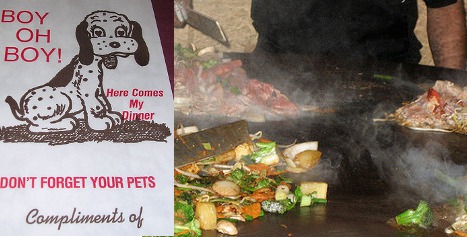We have all been there. Sat in a restaurant, stomach so full we’re about to explode but with food still left on the plate.
The Stockholm Consumer Cooperative Society (Konsumentföreningen Stockholm-KfS) has found that Swedes are often too embarrassed to ask for their leftovers in a bag, and hope that a new film focusing on the environmental impact of food waste will help to change restaurant culture.
“Producing food requires a lot of resources and produces negative environmental emissions to both air and water. If the food is then thrown away, all the environmental impact has been in vain,” says Louise Ungerth, head of consumer and environment at KfS.
According to Ungerth, a rough estimate shows that 300,000 tonnes of food is being thrown away in Swedish restaurants every year, with a big part being leftovers from customer’s plates.
In a recent survey carried out by KfS, 80 per cent of restaurant goers said they never ask for a “doggy bag”. The survey indicates that the main reasons are that it’s embarrassing and impractical.
“I think that making people aware of the environmental issues of food waste will be a wake up call for a lot of people who haven’t thought about this before and hopefully it will make them feel less embarrassed to ask for ‘doggy bags’,” says Ungerth.
KfS’ new informational video offers tips on how to make food last longer and to cut waste and features Swedish rap star Dogge Doggelito.
Kim Pettersson, headwaiter at Stockholm restaurant Ulla Winbladh, says that the restaurant does offer doggy bags, but it is often only American guests who use the service.
“We do have ‘doggy bags’ in case our custumers should ask but it’s not very common that they do. Most people that do are either Americans or people who have been to countries where it’s more common.”
Whether it’s actually for your pooch or not, asking your waiter for a ‘doggy bag’ is something that’s considered the norm in even the fanciest restaurants in America.
But even though some nicer restaurants in Sweden might look at you with a furrowed brow if you ask for a ‘doggy bag’, most restaurants asked in the survey said that they would gladly pack up leftovers for their customers.
Some even said they would even consider offering “doggy bags” to custumers who still had food left on their plates to make it less embarrassing.
“We rather offer them a ‘doggy bag’ first before we throw the food away,” Kim Pettersson tells The Local.
According to the Swedish Society for Nature Conservation (Naturskyddsföreningen), one third of Sweden’s collective impact on the environ comes from food production.
In a similar attempt to reduce food waste in the UK, it was calculated that the annual emission of carbon dioxide could be reduced by 18 million tonnes. This would have the same affect as taking one in five cars off the roads.
The KfS is not only trying to change people’s habits in restaurants but also at home where almost half of Sweden’s annual food waste happens, according to Ungerth.
Information published on their website includes tips, information and recipes using leftover ingredients.



 Please whitelist us to continue reading.
Please whitelist us to continue reading.
Member comments